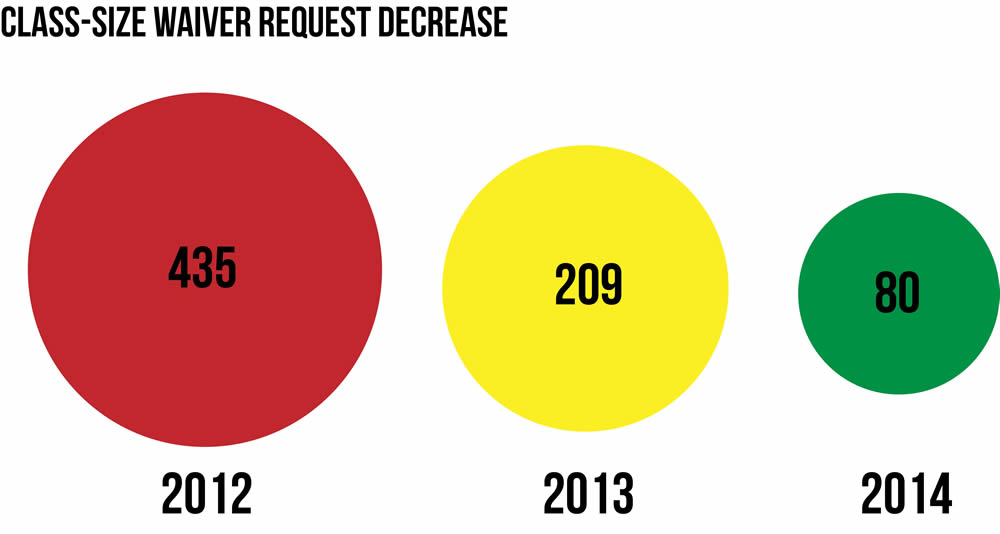Student achievement occurs when high-quality teachers are paired with balanced class sizes. Dallas ISD is achieving this important balance and requesting its fewest number of class size waivers since 2012.
“Through Destination 2020 and the Teacher Excellence Initiative, we are making great strides in attracting, retaining and supporting the type of teachers needed to bring positive change to our classrooms,” said Ann Smisko, deputy superintendent and chief academic officer. “The plan is to place those instructors in classrooms with the right number of students in order to maximize their talents.”
Dallas ISD is priming its schools for potential gains by effectively managing class sizes. This is especially evident in the one area mandated by state law to cap class sizes, kindergarten through fourth grade classrooms.
Texas mandates that the teacher to student ratio in kindergarten through fourth grade classrooms be capped at 1:22. Like many other school districts, Dallas ISD often seeks class size waivers from the Texas Education Agency for this area for unanticipated growth or financial hardship. Thanks to its efforts to lower class sizes, the district requested just 80 such waivers for the current school year, a sharp decline from the 435 waivers it sought in 2012.
“To achieve such a dramatic decrease, we placed even greater resources in our most important resource, our teachers,” Smisko said. “We’ve added more teaching staff, which increases the number of available teachers and allows us to have fewer students per class.”
The number of students per a single teacher determines the size of a classroom. Dallas ISD looks at that number in two ways: the budgeted number of students per teacher and the actual number of students per teacher. In both cases the district is within recognized best practices.
For the 2014-2015 school year, Dallas ISD has budgeted one teacher for every 23 elementary students, one for every 24 middle school students, and one for every 25 high school students. Those ratios are in line with neighboring school districts, but Dallas ISD’s actual average teacher to student is far lower. Through a combination effective master scheduling at schools and the addition of nearly 800 full-time teaching positions, the district has a teacher to student ratio between 1:16 and 1:18 at each of the three school levels.
Today’s figures represent a significant decrease from the 2013-2014 school year, when the overall district teacher to student ratio was 1:18.3, the highest rate in seven years prior.
This means that in most cases, Dallas ISD teachers are supporting fewer students than assumed in the district’s budget, giving them more time to provide the individual attention and support students need to reach their potential. This occurs because district and school leaders make sure to place their individual budgets where they are needed most: the classroom.
“This doesn’t mean very classroom is the exact same size,” Smisko said. “In fact, we do have some larger classrooms, especially at our high schools due to different programs such as career tech. But overall, we are achieving the right mix district-wide.”
Dallas ISD’s teacher to student ratio falls within national best practices according to a September 2014 report by The Wallace Foundation titled “How Leadership Influences Learning.” The report concludes reductions from a typical 22 to 30 student class, to an approximately 15 student class have the potential to significantly increase student achievement.

